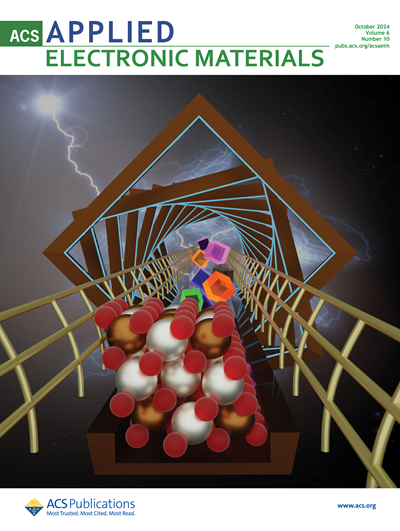构建用于增强微波吸收性能的异质结构 PAN@PDA@Ti3C2Tx MXene 复合薄膜
IF 4.7
3区 材料科学
Q1 ENGINEERING, ELECTRICAL & ELECTRONIC
引用次数: 0
摘要
MXenes 是过渡金属碳化物和氮化物,在微波吸收方面大有可为。然而,这些材料有一些缺点,包括阻抗失配和高密度,这与微波吸收所需的薄型、轻质、宽带和高吸收特性相冲突。这项工作展示了利用溶液沉积法制造具有皱褶结构的极薄且轻的导电薄膜。以聚丙烯腈(PAN)纳米纤维膜为基底,通过聚多巴胺(PDA)表面改性构建异质结构。样品的偶极和界面极化、传导损耗、阻抗匹配、多重反射和散射、四分之一波长、准天线、磁滞损耗、残余损耗和超材料特性增强了样品的微波吸收能力。电磁参数分析表明,厚度为 1.5 mm 的 PAN@PDA@Ti3C2Tx MXene (PPM) 薄膜在 16.08 GHz 频率下的最小反射损耗(RLmin)为 -38.30 dB,有效吸收带宽(EAB)为 5.68 GHz(厚度为 1.7 mm,频率范围为 11.6-17.3 GHz)。仿真结果表明,薄膜的雷达截面(RCS)最高可降低 27.33 dB-m2。因此,该薄膜在电磁防护、电子设备和航空航天领域具有巨大的应用潜力。本文章由计算机程序翻译,如有差异,请以英文原文为准。

Construction of Heterostructured PAN@PDA@Ti3C2Tx MXene Composite Films for Enhanced Microwave Absorption Performance
MXenes, which are transition metal carbides and nitrides, have great promise for microwave absorption. Nevertheless, these materials have several disadvantages, including impedance mismatch and high density, which are in conflict with the desired characteristics of being thin, lightweight, wide-band, and highly absorbent for microwave-absorption purposes. This work demonstrates the fabrication of extremely thin and light conductive films with a wrinkled structure using a solution deposition method. Polyacrylonitrile (PAN) nanofiber membranes were used as the substrate, and a heterostructure was built through polydopamine (PDA) surface modification. The dipole and interfacial polarization, conduction loss, impedance matching, multiple reflections and scattering, quarter-wavelength, quasi-antennas, hysteresis loss, residual loss, and metamaterial properties enhance the microwave absorption of the samples. Analysis of electromagnetic parameters showed that the PAN@PDA@Ti3C2Tx MXene (PPM) film achieved a minimum reflection loss (RLmin) of −38.30 dB at 16.08 GHz with a thickness of 1.5 mm, and an effective absorption bandwidth (EAB) of 5.68 GHz (thickness of 1.7 mm, frequency range of 11.6–17.3 GHz). Simulation results indicated that the film’s radar cross-section (RCS) could be reduced by up to 27.33 dB·m2. Therefore, the film shows great potential for applications in electromagnetic protection, electronic devices, and aerospace fields.
求助全文
通过发布文献求助,成功后即可免费获取论文全文。
去求助
来源期刊

ACS Applied Electronic Materials
Multiple-
CiteScore
7.20
自引率
4.30%
发文量
567
期刊介绍:
ACS Applied Electronic Materials is an interdisciplinary journal publishing original research covering all aspects of electronic materials. The journal is devoted to reports of new and original experimental and theoretical research of an applied nature that integrate knowledge in the areas of materials science, engineering, optics, physics, and chemistry into important applications of electronic materials. Sample research topics that span the journal's scope are inorganic, organic, ionic and polymeric materials with properties that include conducting, semiconducting, superconducting, insulating, dielectric, magnetic, optoelectronic, piezoelectric, ferroelectric and thermoelectric.
Indexed/Abstracted:
Web of Science SCIE
Scopus
CAS
INSPEC
Portico
 求助内容:
求助内容: 应助结果提醒方式:
应助结果提醒方式:


